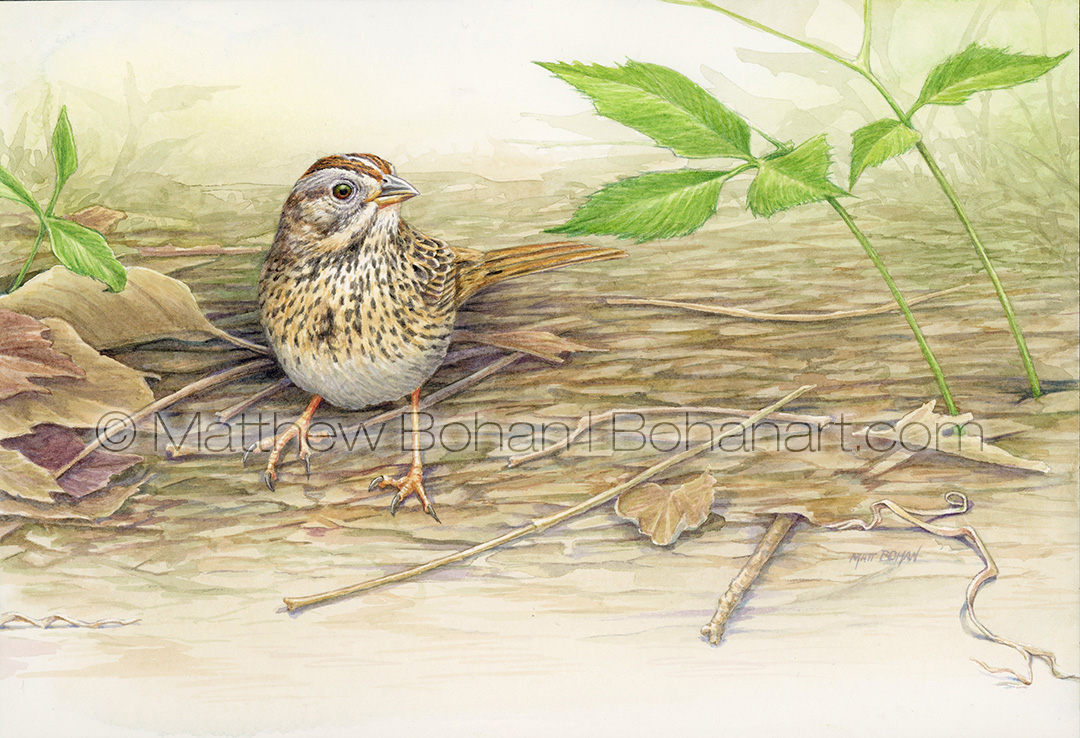
Lincoln’s Sparrows are easily missed, which is really a shame. They are small, shy birds that like to skulk around in the underbrush. Like many of the sparrows, they are “Little Brown Jobs” that reward those who are willing to appreciate the subtleties that make them unique. Early in my birding experience I wasn’t aware of these little treasures. Like many beginners, I took on yard birds first and then moved on to waders and waterbirds. Later, warblers attracted my attention with their flashy, bold, saturated colors. As I became a better birder, I found that sparrows are also rewarding, with a diverse and fantastic palette of subtle earth tones in refined patterns that make perfect camouflage. It’s hard to pick a favorite sparrow, but I can tell you that I’ll never get tired of looking at Lincoln’s.
In my experience Lincoln’s Sparrows typically afford a brief peek before disappearing into the brush. I saw my first one ages ago at the edge of the parking lot; that was after a long day of May birding at Magee Marsh in Ohio. Since then, I’ve seen them many times, but my hands-down favorite is a bird that visits our yard for a few days each May. I can’t prove it’s the same individual, but for several years we’ve had a single Lincoln’s Sparrow show up and work its way along the eastern hedge of our yard, mostly foraging in the low plants and leaf litter near our ninebark shrubs. I’ve never seen it venture to any other part of the yard, despite having similar habitat in other areas. Usually it hangs around for 2-3 days and then moves on. This year it stayed for more than ten days. In addition to the usual suet logs, I had been putting a small dab of suet in a spot near the ground for American Robins and Gray Catbirds. Well, that little Lincoln’s Sparrow discovered the suet and fueled up every few hours. It was a treat for the bird and for our family watching from inside.
After getting plenty of shots of the cooperative bird from the kitchen window, I knew it would make for a fun painting.

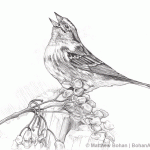
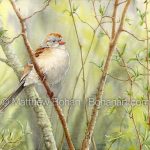
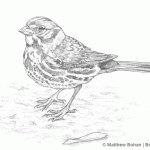
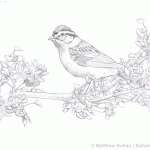
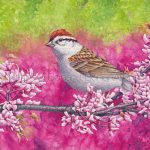
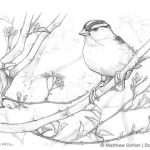
Leave a Reply